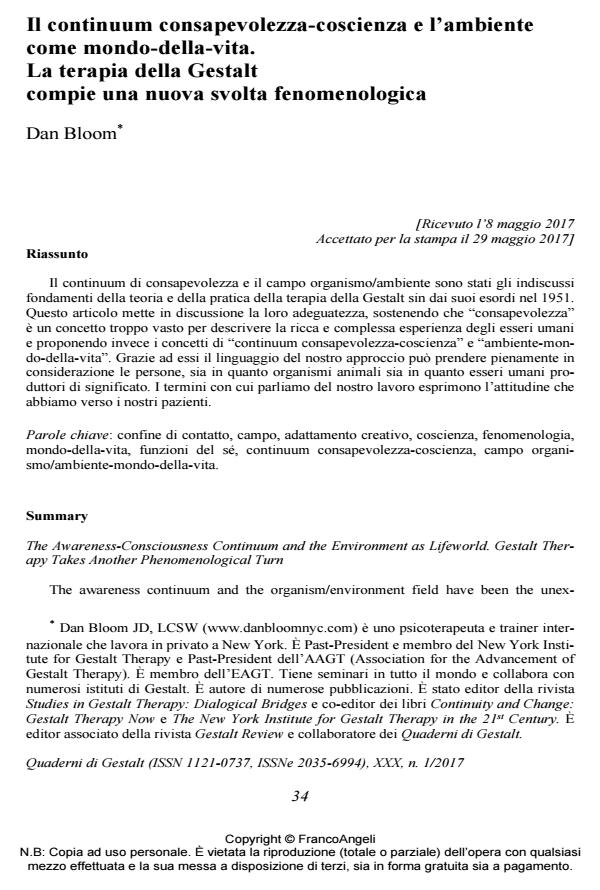The Awareness-Consciousness Continuum and the Environment as Lifeworld. Gestalt Ther-apy Takes Another Phenomenological Turn
Journal title QUADERNI DI GESTALT
Author/s Dan Bloom
Publishing Year 2017 Issue 2017/1
Language Italian Pages 19 P. 34-52 File size 227 KB
DOI 10.3280/GEST2017-001004
DOI is like a bar code for intellectual property: to have more infomation
click here
Below, you can see the article first page
If you want to buy this article in PDF format, you can do it, following the instructions to buy download credits

FrancoAngeli is member of Publishers International Linking Association, Inc (PILA), a not-for-profit association which run the CrossRef service enabling links to and from online scholarly content.
The awareness continuum and the organism/environment field have been the unexamined foundations for Gestalt therapy’s theory and practice since its beginning in 1951. This paper questions their adequacy. It argues that "awareness" is too broad a concept to describe the rich and complex experience of being human. The "awareness-consciousness continuum" and "environment-lifeworld" are proposed. Persons, as animal organism as well as meaning-making existential human beings, can then be fully considered with the language of our modality. The terms by which we consider our work express our attitude towards our patients.
Keywords: Contact-boundary, field, creative-adjusting, consciousness, phenomenology, lifeworld, self functions, awareness-consciousness continuum, organism/environment-lifeworld field.
- La supervisione in psicoterapia della Gestalt: la prospettiva situazionale come antidoto contro la vergogna Margherita Spagnuolo Lobb, in QUADERNI DI GESTALT 1/2024 pp.27
DOI: 10.3280/qg2024-1oa17952 - Relations. La connaissance relationnelle esthétique du champ Margherita Spagnuolo Lobb, Joseph Caccamo, in Cahiers de Gestalt-thérapie /2019 pp.82
DOI: 10.3917/cges.041.0082
Dan Bloom, Il continuum consapevolezza-coscienza e l’ambiente come mondo-della-vita. La terapia della Gestalt compie una nuova svolta fenomenologica in "QUADERNI DI GESTALT" 1/2017, pp 34-52, DOI: 10.3280/GEST2017-001004